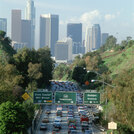
Judicious use of vegetation can yield rapid and sustained improvements in street-level air quality in dense urban areas. A 2012 study found that planting grass, climbing ivy, and other greenery in urban street canyons can reduce the concentrations of street level NO2 by up to 40% and PM by 60%, 8 times more than previously thought. Trees were also shown to be effective, but only if care is taken to avoid trapping pollutants beneath their crowns.
Pugh, Thomas A. M., A. Robert Mackenzie, J. Duncan Whyatt, and C. Nicholas Hewitt. “Effectiveness of Green Infrastructure for Improvement of Air Quality in Urban Street Canyons.” Environmental Science & Technology 46, no. 14 (2012): 7692–99. https://doi.org/10.1021/es300826w.
